Thingiverse

Roller Squeegee/Roller Towel for Court Drying by LoboCNC
by Thingiverse
Last crawled date: 3 years, 4 months ago
With little to do this winter besides play outside, being able to quickly dry off a tennis, pickleball, or basketball court takes on new importance. This roller squeegee design will quickly push off all the standing water on a court, and then it can be used with loops of microfiber towels (see video) to dry the surface to the point of playability.
Watch it go at: https://youtu.be/Db9vcBc5jrA
PRINTING
This should work with PLA, ABS or PETG. Just make sure you get very good layer adhesion because all parts are load bearing. Parts are designed for 0.2mm layer, 0.4mm line width.
PART LIST
In addition to the 3D printed parts (2 caps, 2 plugs, 1 socket, 1 knob, 1 anchor), you will need:
3 - 1/4"-20 nuts
2 - 1/4-20 x 1" long socket cap screws
1 - 1/4"-20 x 3" long hex head bolt
2 - 1/4" washers
2 - 8-32 x 3/8" long screws
10 - #8 x 1/2" self-drilling sheet metal screws
2 - 608 skate bearings (sealed)
1 - 36" long, 1x1", 1/16" wall aluminum square tube
1 - 35.75" long, sch. 40, 3/4" galvanized steel pipe
1 - threaded replacement mop handle
1 - 36" long piece of foam pipe insulation (for 3/4" dia. copper pipe.
ASSEMBLY
(1) Press 1/4-20 nuts into the hex sockets in the 2 plugs and in the anchor.
(2) In the aluminum square tube, drill a 0.172" dia. hole 2" from one end, centered in the tube. The hole should go through both sides of the tube.
(3) Insert the anchor piece into the tube, nut first, and secure with the two 8-32 screws.
(4) Turn down the outer diameter of the two 1/4" socket head screws to 8mm, so that they just fit in the 608 bearings. You can do this by putting the screw in a drill or drill press and using a file or grinder to shave down the head.
(5) Place a washer on each screw and then screw into the two plug pieces in the ends of the steel pipe.
(6) Press the 3" long hex head bolt into the knob.
(7) Press one 608 bearing into each of the caps.
(8) Slide one of the cap pieces onto the end of the square tube with the anchor. Secure in place with the knob/bolt.
(9) Slide the other cap on the other end of the square tube and secure in place with two of the self-drilling screws.
(10) Center the socket piece on the square tube and secure with eight of the self-drilling screws.
(11) Slide the piece of insulation over the pipe. Is should be a snug fit. (If it loosens up over time, you can add rubber bands at the ends as shown in the photos.)
(12) Loosen the knob so you can slide the cap off by about 1/2". Insert one end of the roller into the bearing on the far cap, and then slide the cap with the knob down onto the other end of the roller. Tighten the knob back down.
(13) Insert the mop handle into the socket and you are ready to roll!
FOR THE TOWEL LOOPS
I used Relentless Drive's "Neighbor’s Envy" XL Microfiber Towels, which are 24" x 60". Simply sewing the towel into a 24" wide loop doesn't track very well on the roller. Instead, I cut the towel in half and sewed two seams along the 30" side to form a 30" wide x 48" circumference loop. (I used a wide zigzag stitch to form a butt-seam between the two towel edges to minimize the seam lump.)
To use the towels, free one end of the roller and slide the towel over. The video shows how this works. A single dry towel loop will dry about 300 sq.ft. (after all the standing water has been thoroughly squeegeed off). You can hand-wring out the microfiber towels, but a damp towel will only dry about 1/2 the area of a completely dry towel. You'll want to have a bunch on hand.
Watch it go at: https://youtu.be/Db9vcBc5jrA
PRINTING
This should work with PLA, ABS or PETG. Just make sure you get very good layer adhesion because all parts are load bearing. Parts are designed for 0.2mm layer, 0.4mm line width.
PART LIST
In addition to the 3D printed parts (2 caps, 2 plugs, 1 socket, 1 knob, 1 anchor), you will need:
3 - 1/4"-20 nuts
2 - 1/4-20 x 1" long socket cap screws
1 - 1/4"-20 x 3" long hex head bolt
2 - 1/4" washers
2 - 8-32 x 3/8" long screws
10 - #8 x 1/2" self-drilling sheet metal screws
2 - 608 skate bearings (sealed)
1 - 36" long, 1x1", 1/16" wall aluminum square tube
1 - 35.75" long, sch. 40, 3/4" galvanized steel pipe
1 - threaded replacement mop handle
1 - 36" long piece of foam pipe insulation (for 3/4" dia. copper pipe.
ASSEMBLY
(1) Press 1/4-20 nuts into the hex sockets in the 2 plugs and in the anchor.
(2) In the aluminum square tube, drill a 0.172" dia. hole 2" from one end, centered in the tube. The hole should go through both sides of the tube.
(3) Insert the anchor piece into the tube, nut first, and secure with the two 8-32 screws.
(4) Turn down the outer diameter of the two 1/4" socket head screws to 8mm, so that they just fit in the 608 bearings. You can do this by putting the screw in a drill or drill press and using a file or grinder to shave down the head.
(5) Place a washer on each screw and then screw into the two plug pieces in the ends of the steel pipe.
(6) Press the 3" long hex head bolt into the knob.
(7) Press one 608 bearing into each of the caps.
(8) Slide one of the cap pieces onto the end of the square tube with the anchor. Secure in place with the knob/bolt.
(9) Slide the other cap on the other end of the square tube and secure in place with two of the self-drilling screws.
(10) Center the socket piece on the square tube and secure with eight of the self-drilling screws.
(11) Slide the piece of insulation over the pipe. Is should be a snug fit. (If it loosens up over time, you can add rubber bands at the ends as shown in the photos.)
(12) Loosen the knob so you can slide the cap off by about 1/2". Insert one end of the roller into the bearing on the far cap, and then slide the cap with the knob down onto the other end of the roller. Tighten the knob back down.
(13) Insert the mop handle into the socket and you are ready to roll!
FOR THE TOWEL LOOPS
I used Relentless Drive's "Neighbor’s Envy" XL Microfiber Towels, which are 24" x 60". Simply sewing the towel into a 24" wide loop doesn't track very well on the roller. Instead, I cut the towel in half and sewed two seams along the 30" side to form a 30" wide x 48" circumference loop. (I used a wide zigzag stitch to form a butt-seam between the two towel edges to minimize the seam lump.)
To use the towels, free one end of the roller and slide the towel over. The video shows how this works. A single dry towel loop will dry about 300 sq.ft. (after all the standing water has been thoroughly squeegeed off). You can hand-wring out the microfiber towels, but a damp towel will only dry about 1/2 the area of a completely dry towel. You'll want to have a bunch on hand.
Similar models
thingiverse
free

2" Square steel tube end cap by EnduranceRC
...ot; square steel tube end cap by endurancerc
thingiverse
this is an end cap for 2" square steel tube (1/8" thick tube)
thingiverse
free

1.5 inch Schedule 40 End Cap by dhulihan
...ool hole is slightly bigger than an piece of 1.5" pipe, so two end caps can turn a piece of pipe into an nifty spool holder.
thingiverse
free

1" box section square tubing end cap by jugglingandy
... as the external measurement is 1". (25.5mm)
the thickness of the end cap is 4mm and they need 16mm of tubing to push on to.
thingiverse
free

Dry Box 1/4" Tube Cap by TyCreek
...st cap didn't fit snug. so i made a longer one with more taper so tube ends that become compressed over time will still seal.
thingiverse
free

PL259 PVC End Cap by WillyMakit
...quot; long. this fits nicely on 1 1/4" schedule 40 pvc pipe, and you can use regular pvc glue to attach it to the pvc pipe.
thingiverse
free

PVC Custom Wire Spools by Look
...'re snap fit so no fasteners needed!
you can drill and screw into the flange or glue it if you want it to be more permanent.
grabcad
free

1/4" Hex Power Shank to 1/4" Square Drive Adapter
... adapter with 1/4" power drive hex (quick release dog end). ball detent secures 1/4" socket with square mounting shank.
3dwarehouse
free

Sliding Rigger SUP
...cassette) 1/2' drill bit for plastic 8 mm carbide tip drill bit for metal tubing drill bit and counter sink for 1' screws
thingiverse
free

Source4 Barrel Knob Socket by joblight
...th any 3/8" drive socket wrench. when using a drill, make sure the torque clutch is set to it's lowest possible setting.
thingiverse
free

Small Clamp for Modular Clamping System by Erich_with_an_H
...ghtly. the upside is that, if the edges wear until the fit is too loose, you can just tighten down the screws to restore the fit.
Squeegee
thingiverse
free

Squeegee by IJI
...squeegee by iji
thingiverse
a squeegee with a big or small rubber part option.
thingiverse
free

Foil Squeegee by Mafi2206
...foil squeegee by mafi2206
thingiverse
foil squeegee
thingiverse
free

Squeegee Holder
...squeegee holder
thingiverse
a simple squeegees holder i designed.
to make editing easier i uploaded the f3d too.
thingiverse
free

Squeegee with cutter by Raysting23
...bble wrap insulation. a replaceable disposable razor blade for utility knives cuts the insulation and the squeegee sets the tape.
thingiverse
free

Car Squeegee by sbroz
...by sbroz
thingiverse
a car window squeegee that can be used either standalone, or with the universal handle.
for the foggy days!
thingiverse
free

squeegee holder Lillnaggen by Fully_Retractable
...squeegee holder lillnaggen by fully_retractable
thingiverse
ikea lillnaggen squeegee holder
thingiverse
free

Screen printing Squeegee by DavyK
...screen printing squeegee by davyk
thingiverse
squeegee holder for screen printing, designed to work in real conditions.
thingiverse
free

Squeegee Sucker Attachment by TimeMonstr
...d vacuum hose. this is a long squeegee looking attachment with a bunch of holes to such up what ever you squeegee or scrape off.
thingiverse
free

Simple Squeegee by shadetherapper
...thingiverse
i wanted a simple squeegee to clean windows, and since i had some tpu laying around, i decided to design one!
enjoy!
thingiverse
free

Screenprint Squeegee Holder by sralaniz
...squeegee.
stl file, can be printed using any 3d printer, however i have only experienced printing this on makerbot and makergear.
Lobocnc
thingiverse
free

Soprano Ukulele by LoboCNC
...soprano ukulele by lobocnc
thingiverse
this ukulele prints in 4 pieces and glues together with superglue.
thingiverse
free

Oval Carabiner by LoboCNC
...oval carabiner by lobocnc
thingiverse
or shower curtain ring. or napkin ring. or bracelet. print some and find out.
thingiverse
free

Frog Checkers by LoboCNC
...frog checkers by lobocnc
thingiverse
checkers game inspired by morenap's treefrog (http://www.thingiverse.com/thing:18479)
thingiverse
free

Paring Knife Sheath by LoboCNC
...g knife sheath by lobocnc
thingiverse
sheath for a victorinox paring knife (model 5.0631). protect your blade and your fingers.
thingiverse
free

Ratcheting Capo by LoboCNC
...d it prints as one piece! to use, just open it up, slip it onto your neck and then ratchet the bar down to the desired pressure.
thingiverse
free

Frankenstein Light Switch Plate by LoboCNC
...frankenstein light switch plate by lobocnc
thingiverse
"igor, throw the switch!"
"yes, master."
thingiverse
free

Thicker Lid for Pasta Portion Dispenser by LoboCNC by NorxMAL
... pasta portion dispenser by lobocnc; since the lid printed in pla, the tabs broke off too easily and didn't fit very snuggly.
thingiverse
free

Quick Clamp by LoboCNC
...tchet to hold the clamp shut. it prints with minimal supports and requires no additional fasteners.
https://youtu.be/42zkmku1nug
thingiverse
free

Magnetic Memo Clip by LoboCNC
...nting spring clip is designed for 8mm dia, x 3mm thick magnets (master magnetics #07045) commonly available from hardware stores.
thingiverse
free

Crinkle Lamp by LoboCNC
...ng:584714). all of the overhanging surfaces are at exactly 45 degrees, so it prints without supports, bridges or a lot of drama.
Court
3d_export
$65

court
...court
3dexport
simple rendering of the scene file
3d_ocean
$9

3D Basketball court
...sketball court field net sport
low poly of a basketball court. the basketball is modeld. the texture of the court is 4k. enjoy!!!
3d_export
$30

tennis court
...imally convey the main features of this court. let me know what you think of it and feel free to contact me i offer full support.
turbosquid
$2

Basketball Court
...ee 3d model basketball court for download as ma, fbx, and obj on turbosquid: 3d models for games, architecture, videos. (1710207)
turbosquid
$2

basketball court
... 3d model street basketball court for download as obj and 3ds on turbosquid: 3d models for games, architecture, videos. (1613939)
turbosquid
$23

Basketball Court
...model basketball court for download as obj, fbx, dae, and stl on turbosquid: 3d models for games, architecture, videos. (1663735)
turbosquid
$19

Tennis Court
... 3d model tennis court for download as 3ds, obj, c4d, and fbx on turbosquid: 3d models for games, architecture, videos. (1273963)
turbosquid
$12

Food Court
...ee 3d model food court for download as max, 3ds, fbx, and obj on turbosquid: 3d models for games, architecture, videos. (1556486)
turbosquid
$3

court hammer
... 3d model court hammer for download as 3ds, obj, c4d, and fbx on turbosquid: 3d models for games, architecture, videos. (1387801)
turbosquid
$2

Football Court
...model street football court for download as obj, 3ds, and fbx on turbosquid: 3d models for games, architecture, videos. (1616036)
Towel
archibase_planet
free

Towels
...towels
archibase planet
towels towel bath towel face towel
towels n040914 - 3d model (*.gsm+*.3ds) for interior 3d visualization.
archibase_planet
free

Towels
...towels
archibase planet
towels towel bath towel
towels - 3d model (*.3ds) for interior 3d visualization.
archibase_planet
free

Towel
...towel
archibase planet
towel jack-towel bath towel
towel - 3d model (*.gsm+*.3ds) for interior 3d visualization.
archibase_planet
free

Towel
...towel
archibase planet
towel bath towel face towel
towel - 3d model (*.gsm+*.3ds) for interior 3d visualization.
archibase_planet
free

Towel
...towel
archibase planet
towel bath towel jack-towel
rail towel - 3d model (*.gsm+*.3ds) for interior 3d visualization.
archibase_planet
free

Towel
...towel
archibase planet
towel bath towel face towel
towel n111007 - 3d model (*.gsm+*.3ds) for interior 3d visualization.
archibase_planet
free

Towel
...towel
archibase planet
towel bath towel face towel
towel 2 - 3d model (*.gsm+*.3ds) for interior 3d visualization.
archibase_planet
free

Towel
...towel
archibase planet
towel bath towel face towel
towel n180512 - 3d model (*.gsm+*.3ds) for interior 3d visualization.
archibase_planet
free

Towel
...towel
archibase planet
towel bath towel face towel
towel n120612 - 3d model (*.gsm+*.3ds) for interior 3d visualization.
archibase_planet
free

Towel
...towel
archibase planet
towel bath towel face towel
towel n190913 - 3d model (*.gsm+*.3ds) for interior 3d visualization.
Drying
3d_export
$5

hair-dry
...hair-dry
3dexport
hair-dry wahl 5439-024 super dry professional 2000 watts styling hair dryer- black
design_connected
$16

Dry-Dock
...dry-dock
designconnected
restoration hardware dry-dock computer generated 3d model.
archive3d
free

Dry 3D Model
...dry 3d model archive3d drying unit radiator towel dry towel dry - 3d model...
turbosquid
$9

Dry Sprey
...urbosquid
royalty free 3d model dry sprey for download as ma on turbosquid: 3d models for games, architecture, videos. (1661017)
turbosquid
$1

Dry Persimmon
...quid
royalty free 3d model dry persimmon for download as max on turbosquid: 3d models for games, architecture, videos. (1449030)
turbosquid
$1

Dry Persimmon
...quid
royalty free 3d model dry persimmon for download as max on turbosquid: 3d models for games, architecture, videos. (1448712)
turbosquid
free

drying rack
...osquid
royalty free 3d model drying rack for download as max on turbosquid: 3d models for games, architecture, videos. (1614082)
turbosquid
$7

Dry plant
...
royalty free 3d model dry plant for download as max and fbx on turbosquid: 3d models for games, architecture, videos. (1273449)
turbosquid
$37

pineapple dry
... available on turbo squid, the world's leading provider of digital 3d models for visualization, films, television, and games.
turbosquid
$30

Dry Reed_001
... available on turbo squid, the world's leading provider of digital 3d models for visualization, films, television, and games.
Roller
turbosquid
$26

Roller A
...urbosquid
royalty free 3d model roller a for download as fbx on turbosquid: 3d models for games, architecture, videos. (1350603)
turbosquid
$3

Roller
...oyalty free 3d model roller for download as 3ds, max, and obj on turbosquid: 3d models for games, architecture, videos. (1460818)
3ddd
$1

edilkamin roller
...edilkamin roller
3ddd
камин
edilkamin roller 360
3ddd
$1
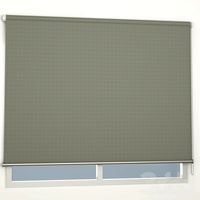
Roller Blinds
...roller blinds
3ddd
рулонная
roller blinds black out finish
turbosquid
$50
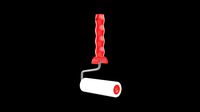
Roller
... roller for download as max, max, c4d, max, max, fbx, and obj on turbosquid: 3d models for games, architecture, videos. (1700762)
3d_export
$10

rollers
...lers
3dexport
this is low-poly model of rollers.<br>model:<br>- low-poly<br>- textured<br>- uv unwrapped
3d_export
$28
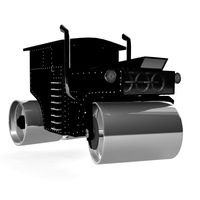
Roller 3D Model
...roller 3d model
3dexport
roller construction boss evil
roller 3d model adagio15740837 50561 3dexport
3d_export
$6
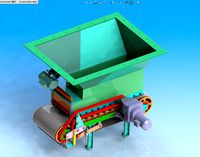
hopper roller conveyor
...hopper roller conveyor
3dexport
hopper roller conveyor
3d_export
$12

roller skates
...roller skates
3dexport
3d_ocean
$19
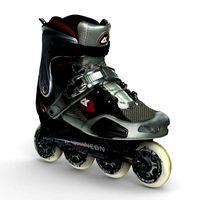
roller skate
...can scanned skates skating sport
3d scan of roller skate. the model has been retopologized and made fully compatible with zbrush.
